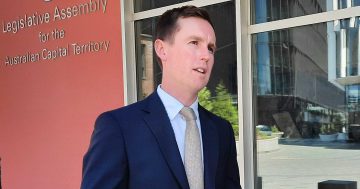
The ACT contains nine national housing ‘hotspots’ with the Gungahlin suburbs of Casey, Crace and Franklin leading the charge according to a new Housing Industry Association report.
The suburb of Gungahlin has also topped the national list of potential ‘hotspots’ for next year’s report based on more recent building approval data, with another Gungahlin suburb, Moncrief, coming in fourth.
Casey has the title of being Canberra’s fastest growing housing area, with population growth of 14.8 per cent during the 2015/16 financial year and $30.2 million in residential building approved.
However, the suburb of Greenway in Tuggeranong actually recorded the highest value of residential building approved at $73.6 million but was recorded in ninth ‘hotspot’ place because its population growth rate was only 2.3 per cent.
The HIA’s Population & Residential Building Hotspots 2017 report was published this week and provides information on Australia’s fastest growing housing markets based on data from the 2015-2016 financial year, with breakdowns for each state and territory.

HIA Executive Director for ACT & Southern NSW, Greg Weller, said that the ACT has done well to have nine areas on the national hotspot list and this shows that the territory not only has strong population growth but also the building activity to back that up. He believes this is an important factor in terms of housing affordability issues.
“I think overall it paints a very positive picture over the last year or so in terms of strong building activity and strong population growth distributed across the ACT,” Mr Weller said.
“We are in quite a good spot at the moment and there is a lot more focus on infill at the moment. I think it’s important that we’re supplying all housing types to make sure there is more choice of housing.”
Mr Weller said that Gungahlin is where a lot of the land is currently available but that south of the lake, Greenway has also done well.
ACT population growth accelerates
The HIA report states that the ACT’s population grew by 1.3 per cent or just over 5,000 during the 12 months to June 2016, bringing the total population to 396,300.
This makes ACT population growth the fourth fastest out of the eight states and territories – just behind NSW and Queensland but ahead of Western Australia.
However, more recent figures up to September 2016 indicate that ACT population growth has accelerated to 1.5 per cent, making it the second fastest growing of the eight jurisdictions after Victoria.
The ACT’s population growth tends to be driven mainly by natural increases (3,600 people) and overseas migration (1,600 people), while interstate migration tends to be close to balance with as many people leaving as moving here.
Nine ACT hotspots
The ACT had nine suburbs in the national ‘hotspots’ list in this week’s HIA report, with an area qualifying as a ‘hotspot’ if its population grew by more than the 1.4 per cent national average during the 2015/16 financial year and at least $150 million worth of residential building was approved.
However, although the territory had the same number of hotspots as the previous year, the composition of the list has changed. Last year’s number one and number two ACT hotspots were ACT–South West and Gungahlin-West but both have now dropped off the list. By contrast, the two new hotspots of Braddon (eighth place) and Greenway (ninth) have emerged.
The ACT’s second placed hotspot is Crace, which saw population growth of 14.1 per cent during 2015/16, as well as $24 million in residential building work. Third place went to Franklin which saw population growth of 7.8 per cent and residential building approvals of $46.1 million.

Renovations
Just under $100 million worth of renovation approvals were recorded for the ACT during 2015/16. The busiest area for renovations was Kambah, with $3.88 million worth of renovation approvals, followed by Ainslie with $3.74 million, Deakin with $3.59 million and Curtin with $2.71 million.
Potential hotspots
The HIA report also looks at up and coming hotspots based on more recent residential building approvals for the year up to February 2017.
The standout ACT performers in this area are the suburbs of Gungahlin and Moncrief, with Gungahlin topping the national list of potential new hotspots in next year’s report based on a 10,096 per cent growth rate in the value of building approvals from $1.5 million in February 2016 to $158.7 million in February 2017. Moncrief has come fourth on the national list with a 729 per cent increase to $303.5 million.
In the territory, the Denman Prospect in the Cotter/Molonglo and Barton in South Canberra are among seven new potential hotspots to look out for.

Top photo: New building work in Canberra by Glynis Quinlan. Other images supplied by the Housing Industry Association.
Do you think supply is keeping up with demand in the Canberra housing market? Let us know your thoughts in the comments below.





















